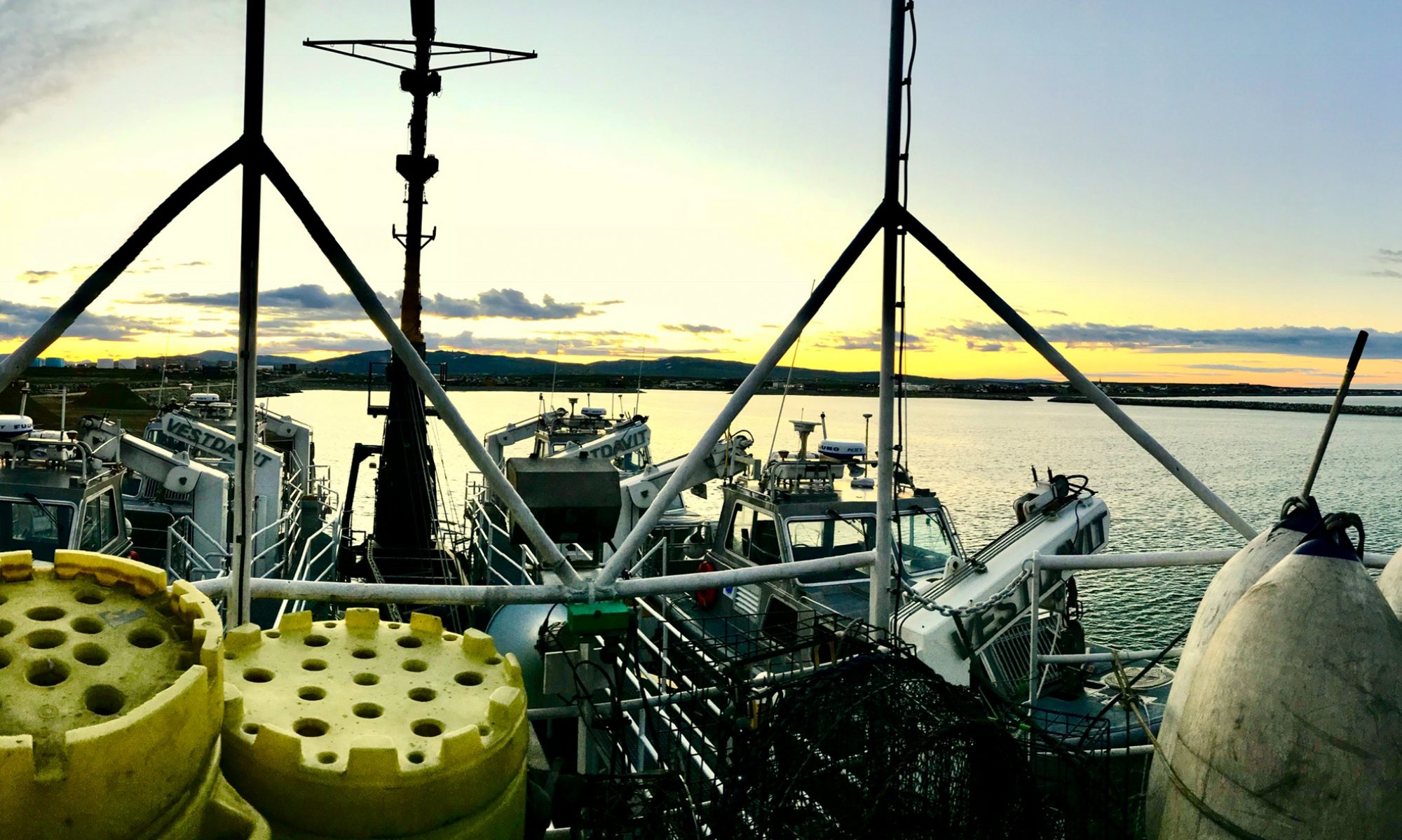NOAA Teacher at Sea
Melissa George
Aboard NOAA Ship Oscar Dyson
July 22 – August 9, 2013
Mission: Pollock Survey
Geographical Area of Cruise: Gulf of Alaska
Date: Tuesday, August 6, 2013
Current Data From Today’s Cruise (9 am Alaska Daylight Time)
Weather Data from the Bridge
Sky Condition: Partly Cloudy
Temperature: 15° C
Wind Speed: 7 knots
Barometric Pressure: 1019.6 mb
Humidity: 90%

Sun and Moon Data
Sunrise: 5:15 am
Sunset: 9:33 pm
Moonrise: 5:33 am
Moonset: 8:45 pm
Latitude: 59 ° 20.4 N Longitude: 141° 16.6 W
The ship’s position now can be found by clicking: Oscar Dyson’s Geographical Position
Science and Technology Log
Besides the mid-water trawling, information about the pollock population is gathered in other ways on the Oscar Dyson research vessel. One of these ways is direct, monitoring the pollock by trawling in other parts of the water column; the other way is indirect, evaluating the prey that the pollock feeds on.
Bottom Trawling
Scientists use acoustics to locate the signal for the fish. Sometimes this signal is noticed near the ocean floor. In this case, the PolyNor’eastern (PNE) Bottom Trawl Net is used to trawl for fish. This net is a large net equipped with rubber bobbins that allow it to get close to the benthic region of the ocean without dragging.

During this research expedition, we used the PNE net six times to survey pollock. Often times these trawls brought up other interesting sea life, that were quickly assessed (identified, measured, and recorded) and returned to the ocean. The majority of invertebrate sea animals such as poriferans (sponges), cnidarians (sea anemones), annelids (segmented worms), mollusks (barnacles), arthropods (hermit crabs hiding in mollusk shells), and echinoderms (sea urchins and starfish) were brought up in these hauls. In addition, some interesting species of fish (see this blog’s Trawling Zoology segment below) were gathered in bottom trawls.


Using the Methot Trawl
We use the Methot trawling net to sample krill, a type of zooplankton that pollock feeds on. On this voyage, the Methot was used 6 times as well. The Methot is a single net with a large square opening or mouth. The net is deployed from the stern and towed behind the vessel. Inside the Methot is a small removable codend where much of the catch is deposited.



The krill is measured and counted as well. First, the water is drained out, then it is weighed, and a small sample is weighed and counted.

Bottom trawls and Methot trawls are both important aspects of the pollock survey.
Personal Log
Accomplishment
Continuing with Maslow’s hierarchy of needs, I will discuss the top part of the pyramid, how self-actualization, or being involved in creative endeavors to expand one’s full potential, are met on the Oscar Dyson.

Since I am an honorary member of the am science team, I am privy to many discussions between the scientists on the team regarding a variety of topics. For example, one side project on the mission is to gather information regarding the abundance and distribution of euphausiids (krill) in the Gulf of Alaska. This research project involves the use of a smaller “critter camera,” engineered and built by two of the MACE (Midwater Assessment and Conservation Engineering) group members, to take pictures of krill at various ocean depths and (ideally) reconcile its distribution with acoustic and Methot trawl data. The goal of the project is to provide insight into the feeding conditions of pollock. The discussions between group members involve postulating, speculating, testing, theorizing, analyzing, teaching, and questioning; clearly this meaty dialog indicates that the process of science is an intellectually stimulating and creative endeavor.

Something to Think About:
In previous posts, we have explored invertebrates encountered on this mission. Today we will look at a group of vertebrates from the class Osteichthyes, a word that comes from the Greek osteon meaning “bone” and ichthus meaning “fish.” We will focus on some of the other fish besides pollock found in bottom trawls. These bottom-dwellers are quite interesting creatures.
One of the most frequently found fish, other than pollock, is a type of rockfish called the Pacific Ocean Perch (POP); the species name is Sebastes alutus (Greek: Sebastes “August, venerable”, alutus “grow, nourish”). This fish actually was seen in many trawls, both mid-water and bottom. As the picture below indicates, the body and fins of the POP are light red; however, there are dark olivaceous areas on back under soft dorsal fin and on the caudal peducle. The maximum length of the fish is 55 cm and it is commonly found at a depth between 100-350 m.

A fish that belongs to the same genus as the POP is the Tiger Rockfish, Sebastes nigrocinctus ( Latin: niger, “black” and cinctus, “belt”). We found this fish once in a bottom trawl. The bottom of the tiger rockfish is light red to orange with several broad, vertical black-red bands on body. It grows to a maximum length of 61 cm and is commonly found at a depth between 55 to 274 m. Notice how similar it looks to the POP.

One of the most colorful fish that was found in a bottom trawl was the kelp greenling, Hexagrammos decagrammus (Greek: hexa, “six”; grammus, “letter, signal”, deca, “ten”), a fish that generally hangs out in rocky reefs and kelp beds in relatively shallow waters (up to 46 m). The fish is olive brown to bluish grey, speckled with irregular blue spots if male and reddish brown to gold spots if female (those we caught were most likely female). The fish reach a maximum length of 53 cm.




















































































